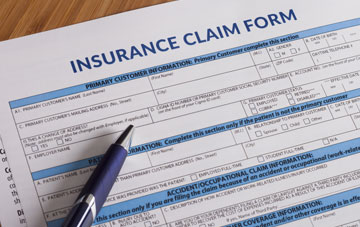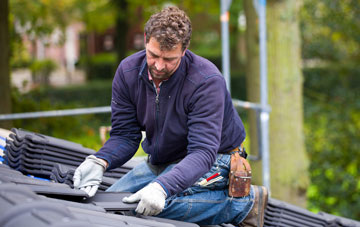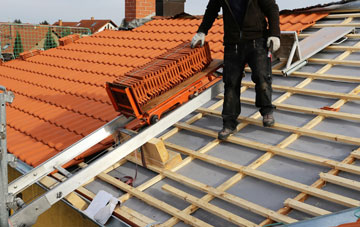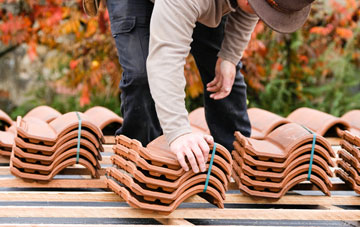Need Help Paying for Roof Work?
UK Grants & Financing Options
What help is available to you? Read our article below.
Save time & save money on ALL roofing work
Compare fully-approved, rated roofers today!
- Exclusive December deals
- Rated, trusted roofers
- 60sec online quote application
- Compare prices with no-obligation
Don't just take our word for it
4.5/5
(73 quotes - 19/12/25)
Roofing Grants and Loans - Finance Options For Your Roof
Table of Contents
If you need roof repairs but you’re struggling to pay for them, or even if you’re considering a major roofing upgrade that will save energy and reduce your carbon footprint, you may be eligible for one or more grants provided by the government of the United Kingdom.
If you don’t qualify for grants, you might be able to obtain low-interest financing, instead.
Here’s a guide to getting the money you need for a roof repair or replacement.


Don’t Put It Off
One of the worst things you can possibly do is put off a necessary roof repair or replacement. While there’s no denying that some repairs can be costly, it’s often best to procure financing with a low interest rate than to put it off so you can save your own money for interest-free repairs. Here’s why: if your roof is in disrepair, there’s a very good chance that moisture is entering the actual structure of your home. This moisture can soak into your insulation and trusses, or even your ceiling, eventually causing significant leaks. The risk of mildew, rot, and mould continues to increase, and if you wait very long, you may end up spending thousands of pounds more than you would have initially paid.
Although financing a roof repair at 15% interest may not seem like a very good idea, it’s often better than trying to wait things out while you save. To show the difference, let’s assume your roof repair will cost £2000. If the interest rate is 15% and it’s added to the overall cost of the loan, you’ll pay £300 in interest. On the other hand, if the roof is left in disrepair, which causes damage to trusses, insulation, and more, your repair costs may climb to more than £5000. This makes 15% interest look much more appealing.
Filing an Insurance Claim
Before you go to all the trouble of applying for grants or loans to cover the cost of your roofing repairs, look over your homeowner’s insurance policy very carefully to find out whether the repair may be covered. For example, if your roof was damaged by high winds or even a hailstorm, there’s a good chance your insurance policy will cover those types of damages, which can certainly help you keep your finances in order.

Keep in mind that repeated homeowner’s insurance claims can cost the overall cost of your policy to climb. Your premiums may increase to the point that paying for insurance itself becomes burdensome. While the UK government does have regulations in place to prevent insurance companies from taking advantage of the insured, if you have many claims, the insurance company would be able to justify its actions in raising your premiums in court.

What Is a Roofing Grant?
Before you take out a loan, you may want to find out if you qualify for one of several different roofing grants available through the UK government. Many people tend to confuse grants with loans, but this is not at all the case. A grant is a sum of money provided to an individual or organisation that does not have to be repaid at any time.
The government knows that not everyone has the funds available to pay thousands of pounds outright for repairs, and they also know that not everyone has the creditworthiness required to take out such a large loan. That’s why they set aside a sum of money, which is usually divided by and distributed through local authorities, to help these homeowners cover the costs of necessary roof repairs.
There are a few different categories of roofing grants that may be available to you, and you should apply for the grant that best suits your unique situation.
- Low-Income Home Repair Grants - The UK government sets aside money to help low-income citizens cover the cost of important and necessary home repairs, which certainly includes roofing repairs. You’ll qualify for these grants based on your financial need. Some of these grants are flat amounts of money; others are associated with a sliding scale based on your income. You’ll need to fill out an application for these grants, but if your situation is emergent (for example, if your roof is leaking), you may be able to ask for expedited processing.
- Historic Building Grants - Special grants exist for the owners of historic buildings that are listed on a national registry. The government is interested in preserving and restoring these buildings, so they offer a variety of grants for this purpose. You’ll need to prove ownership of the property and show your plans for repair or restoration before you’ll qualify for this type of grant.
- Grants for Energy Savings - Finally, there are also grants available to homeowners who want to improve their roofs to reduce their energy consumption. Some such roofing improvements include adding insulation to your roof, switching from roofing materials that provide little insulation to better ones, and even roof replacement if an old roof is significantly increasing your energy consumption. In fact, there are even grants available for people who want to install solar panels on their roofs.
Applying for a Roofing Grant
If you want to find out whether you qualify for a grant, you’ll need to first find your local HIA, or Home Improvement Agency. There are 200 or so spread across the country, and each one serves a specific area. You can find yours by visiting the Foundations website, but if you’re in Wales, you’ll need to search the Care and Repair website, instead. Another group available to homeowners in the UK, called Turn2Us, offers a unique grant search that can help you find funding based on your specific needs. Finally, if your situation is emergent and your roof repair is putting your family’s health and/or safety at risk, contact your local council for information about emergency funds. You may only receive a couple hundred pounds, but this is usually enough to help you and your family find a motel room in an emergent situation or pay the down payment on your repair.
Once you’ve found one or more grants you think you may qualify for, the next step involves filling out the application. This can be done online or in-office at the HIA; processing times are the same regardless of the option you choose. Some of the information you’ll be asked to provide will include your:
- Name;
- Address;
- Telephone number;
- Email address, if you have one;
- Proof of income, either annual or monthly in most cases;
- Statements from your bank to show cashflow in your checking and/or savings accounts;
- Proof of employment (usually stubs from your paycheques); and
- Proof of need, which involves a detailed plan for how the funds will be used. Here, you’ll document your repair needs and why you’re applying for a grant in the first place.


Waiting for Approval
Remember that grants are not bottomless, and the government sets aside a specific amount of money each year to help homeowners pay for their necessary repairs. It’s important to return all your completed paperwork and requested documents as quickly as possible so the HIA (or other group) can start processing your request. Funds are issued on a first come, first serve basis, according to financial need. This means that qualifying applications are processed and fulfilled in the order they are received. For this reason, it’s often much easier to get the funds you need at the start of the year rather than at the end.
Sometimes, you may be required to provide information about the roofing company you’ve chosen to handle your repairs once the grant money becomes available. This will need to be a reputable roofing company who has provided a realistic quote for service. For the best possible results, you should ask your contractor to inspect the damage; this will allow him or her to give you the most accurate quote possible and ensure that your grant money is enough to cover the overall cost of the repairs.
Receiving the Funds
Once your grant is approved, the funds will be distributed to you in one of two ways. In some cases, you’ll receive a deposit into your bank account, and you’ll be trusted to use these funds to pay for your necessary repairs. In other cases, the agency may write the cheque out to the contractor you’ve chosen to ensure those funds are used as intended. Your local agency or council can provide you with more information about how your funds will be distributed if you are approved for the grant.

What Is a Roofing Loan?
A roofing loan is a sum of money provided to a homeowner to cover the cost of roof repairs or replacement. Unlike grants, the funds provided as part of a roofing loan must be repaid in full plus interest. This means that the homeowner will end up paying more than he or she borrowed, much like an auto loan or mortgage loan. While not everyone will qualify, it’s better to take out a loan early than to try to save money over time for repairs. During the time you spend saving, your roof may deteriorate and cause the cost of repairs to skyrocket.
Where to Find Roofing Loans
Any personal lender can provide a loan for roofing repairs or replacements. You may ask your local bank for a loan, or you may choose to fill out an application through a private lending company, instead. Aside from traditional lenders, you may also be able to use peer-to-peer lending services available to you online, or you might choose to take out a short-term loan that comes with a much higher interest rate, but is still relatively affordable if you pay it off quickly. Finally, some roofing companies themselves offer financing for products and labour costs. You can use one or more of these options if you so choose, but for the best possible results, make sure you compare offers and interest rates from multiple lenders.


Qualifications for Loans
Before a lender, including a bank, will provide you with a loan for roof repairs or replacement, you’ll need to first make sure you qualify. Most lenders will look at the same factors to determine their risk in lending to you. To qualify for a loan, you’ll likely need to provide the same information you’d provide if you were applying for a grant. However, the lenders will look at your creditworthiness, as well. Your creditworthiness is what will ultimately determine your ability to obtain a traditional loan, whether from a bank, a private lender, or even a roofing company.
Some of the other things these lenders look for include:
- A good debt-to-income ratio (this shows you make enough money to cover your expenses as well as your loan payments);
- A good work history (you’ll need to show that you’ve been employed at the same place for a minimum amount of time);
- Enough income (most lenders have income minimums, which means you’ll need to earn at least so many pounds per week, month, or year to qualify for a loan); and
- Repayment history (if you regularly pay bills late, or if you’ve defaulted on your mortgage or auto payment, you present a higher risk to your lender).
Sometimes, lenders don’t check your creditworthiness before providing you with funds. Instead, they only need to know that you have an income, a job, and a bank account. These lenders are usually called short-term lenders, and in lieu of a credit check, they will charge you a much higher annual interest rate. It’s very important to consider these loans carefully as failing to make a payment on time, or even making only the minimum payment each month, can cause the total amount owed to spiral out of control. Remember that these lenders will provide only a few hundred pounds at most, and these funds are best used only in absolute emergencies.
Loan Repayment
The methods via which you repay your loan will vary based on the type of loan you choose and your unique loan terms. If you’ve received a roofing repair loan from a bank or even a roofing company, it’ll be your responsibility to make your payments on time, usually on a monthly payment schedule. On the other hand, if you’ve taken out a short-term loan, you may need to make payments with every paycheque you receive, either weekly or biweekly. Private lenders and peer-to-peer lending clubs will likely have their own repayment terms, and they can vary greatly from one group to the next. Be sure you review these carefully before you accept any funding whatsoever.

In some cases, you might elect to have your payments for roof repair loans taken from your bank account or credit card automatically as the payment dates arise. This can certainly make things easier for you, and it helps to negate the risk of human error that can lead to late payment fees that will hurt your credit rating. However, if you choose this route, you should be sure the funds are aviallable in your account on each repayment date; insufficient funds charges can be quite high, as can fees for overdrawing your bank account.

Should I Consider a Roof Repair Grant or Loan?
The very first step in getting roof repairs involves checking your homeowner’s insurance policy to find out if you’re covered. If so, you’ll need to file a claim and wait for a response, which is typically much faster than waiting for grant or loan approval. If your claim is granted, the insurance company will pay a roofing contractor to repair or replace your roof, whichever will provide the best value and overall benefit.
When to Consider a Grant
If your roof repair is not covered under your homeowner’s insurance policy, and if your household is considered low-income, the next step would involve contacting the local HIA and council for grant applications. While the grants may not cover the entire cost of the roof repairs, they’re often enough to help you get started, and some may cover most of the repairs.
When to Consider a Loan
Finally, if you’re not approved for grants, or if your grant does not cover the total amount of your repair costs, you might consider applying for a loan. Unlike grants, these must be repaid to the lender with additional fees and interest over time. This should be your last resort. If you have cash saved for a rainy day in an emergency savings account, it’s a good idea to use that money to cover your repairs rather than taking out a loan. This way, you don’t have to worry about a repayment schedule, and you won’t pay extra in the form of interest.
In Conclusion
As you can see, there are several ways to obtain funds for roof repairs, starting with your insurance company if the damage is covered in your policy. Otherwise, if your repair is emergent and you don’t have funds to cover it, your local HIA and council are the best places to start. Then, you may be able to obtain a loan if you do not qualify for grants or if the grants aren’t enough to cover the repairs.
SAVE UP TO 50%
ON ALL ROOFING JOBS
For exclusive December deals complete our form now!